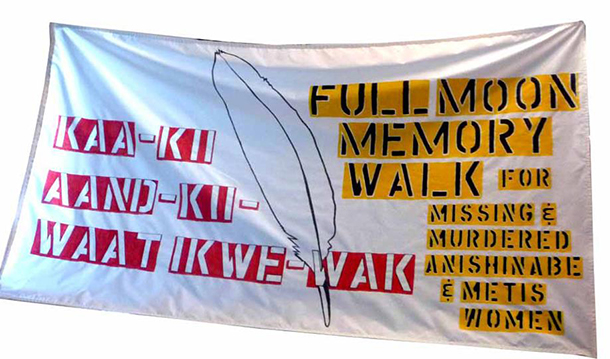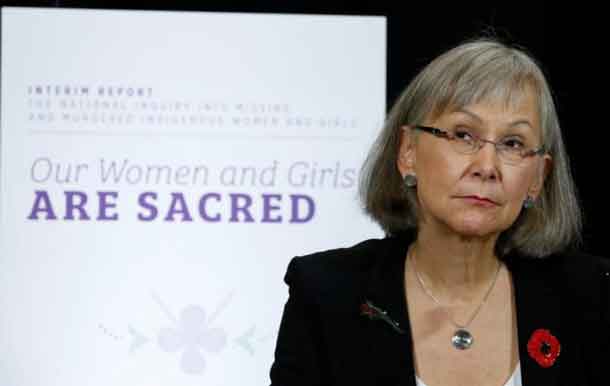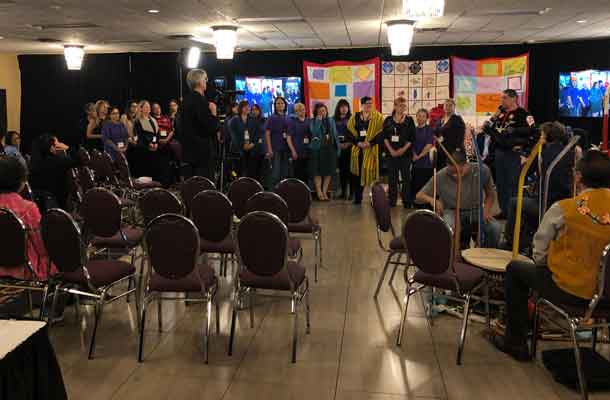
Canada is treating the cases of missing First Nations and Metis women with indifference
WINNIPEG, MB – Editorial – The numbers have always been sad, and horrific, but the new, revised, updated and more accurate database which substantially increases the total of missing and murdered aboriginal women in Canada is a complete indictment on our society.
How can 824 of our fellow citizens disappear without a major countrywide alarm or crisis?
The actual names of the women appear on a new public database created by federal civil servant Maryanne Pearce as part or her thesis for law school at the University of Ottawa. Her total of 824 is significantly higher than the widely used number of 582 women which was assembled by the Native Women’s Association of Canada (NWAC) and the 400 or so which the RCMP has identified. The NWAC’s list helped catapult the issue of violence against indigenous women on to the national agenda. The updated data should draw more attention.
The new research shows the number of missing and murdered aboriginal women in Manitoba is 111, up from NWAC’s oft-quoted figure of 79.
Not Shocked by the Number?
“I’m not shocked at the number and I know the community is not going to be shocked at the number because we’ve always said it was more,” said Nahanni Fontaine, the province’s special adviser on aboriginal women’s issues. “And of course, each year, tragically, those numbers go up.”
Pearce identified thousands of missing and murdered women and was able to determine 824 were Inuit, Métis or First Nations. Among her findings, Pearce found 80 per cent of missing or murdered aboriginal women were not in the sex trade. This is despite the previously held perception that most cases involve prostitutes or women engaged in high-risk behaviour.
The perception that many missing or murdered women put themselves in harm’s way has been used to unfairly discount the problem, said Derek Nepinak, Grand Chief of the Assembly of Manitoba Chiefs. With much of the reporting on missing and murdered aboriginal women focusing on the sex trade and details of a woman’s street life or addictions, the public image that is created does little to develop public concern.
Nepinak said a comprehensive list that can been tested and validated makes it difficult for government, especially Ottawa, to sidestep the issue, and helps bolster the case for a national inquiry into the epidemic of violence against aboriginal women.
“We’ve only scratched the surface of what happened here,” Nepinak said.
And beneath the surface is precious life, no matter what circumstances led to the end of that life for these daughters, sisters, mothers, aunties, grandmothers, wives partners, cousins and friends. The precious lives which belie the numbers:
- 111 aboriginal women are missing or murdered in Manitoba dating back to the homicide of Jean Mocharski near the Alexander Docks in 1961.
- About a third of these murders, or 35, remain unsolved.
- 10 children (aged 11 and under) were murdered.
- The average age of the missing and murdered, among those who are known, is 20.
- six were murdered by their husband or boyfriend.
Nobody imagines this kind of fate, and we must do whatever we can to make sure it doesn’t become a fate that is all too common, real or accepted.
They always say “enough is being done and we treat these cases with the same priority as any other homicide. Money spent on a National Inquiry would be better spent solving the cases.”
Until we spend as much money as we would if 824 middle class white women went missing or murdered, we aren’t doing enough. And a National Inquiry might lead us towards the way of doing just that by pointing out how we are treating these cases differently and exactly what resources are missing to have caused this disproportionate representation of First Nations and Metis women in these particular crime files.
Don Marks
Troy Media
Troy Media’s Eye on Manitoba columnist Don Marks is a Winnipeg-based writer.











